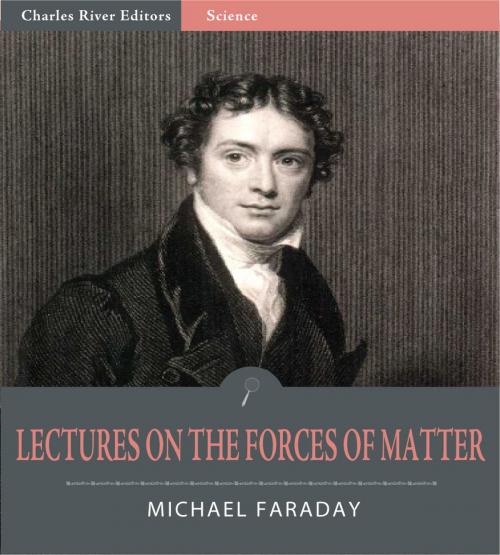Lectures on the Forces of Matter
Nonfiction, Science & Nature, Science, Physics, Gravity, Energy, Other Sciences, History| Author: | Michael Faraday | ISBN: | 9781475302707 |
| Publisher: | Charles River Editors | Publication: | March 7, 2012 |
| Imprint: | Language: | English |
| Author: | Michael Faraday |
| ISBN: | 9781475302707 |
| Publisher: | Charles River Editors |
| Publication: | March 7, 2012 |
| Imprint: | |
| Language: | English |
Michael Faraday, FRS (22 September 1791 25 August 1867) was an English chemist and physicist (or natural philosopher, in the terminology of the time) who contributed to the fields of electromagnetism and electrochemistry. Faraday studied the magnetic field around a conductor carrying a DC electric current. While conducting these studies, Faraday established the basis for the electromagnetic field concept in physics, subsequently enlarged upon by James Maxwell. He similarly discovered electromagnetic induction, diamagnetism, and laws of electrolysis. He established that magnetism could affect rays of light and that there was an underlying relationship between the two phenomena. His inventions of electromagnetic rotary devices formed the foundation of electric motor technology, and it was largely due to his efforts that electricity became viable for use in technology. Although Faraday received little formal education and knew little of higher mathematics, such as calculus, he was one of the most influential scientists in history. Historians of science refer to him as the best experimentalist in the history of science. Throughout his life, Faraday discussed science and his work in letters to contemporaries, and he also delivered lectures on numerous topics. All of these materials were published near the end of the 19th century. These six lectures on gravitation, cohesion, chemical affinity, heat, magnetism, and electricity were intended for young audiences. Together, they offer the reader a fascinating introduction to some of Faraday's most important work on the correlation between the physical forces of the universe. This edition of Faradays Lectures on the Forces of Matter is specially formatted with a Table of Contents.
Michael Faraday, FRS (22 September 1791 25 August 1867) was an English chemist and physicist (or natural philosopher, in the terminology of the time) who contributed to the fields of electromagnetism and electrochemistry. Faraday studied the magnetic field around a conductor carrying a DC electric current. While conducting these studies, Faraday established the basis for the electromagnetic field concept in physics, subsequently enlarged upon by James Maxwell. He similarly discovered electromagnetic induction, diamagnetism, and laws of electrolysis. He established that magnetism could affect rays of light and that there was an underlying relationship between the two phenomena. His inventions of electromagnetic rotary devices formed the foundation of electric motor technology, and it was largely due to his efforts that electricity became viable for use in technology. Although Faraday received little formal education and knew little of higher mathematics, such as calculus, he was one of the most influential scientists in history. Historians of science refer to him as the best experimentalist in the history of science. Throughout his life, Faraday discussed science and his work in letters to contemporaries, and he also delivered lectures on numerous topics. All of these materials were published near the end of the 19th century. These six lectures on gravitation, cohesion, chemical affinity, heat, magnetism, and electricity were intended for young audiences. Together, they offer the reader a fascinating introduction to some of Faraday's most important work on the correlation between the physical forces of the universe. This edition of Faradays Lectures on the Forces of Matter is specially formatted with a Table of Contents.















